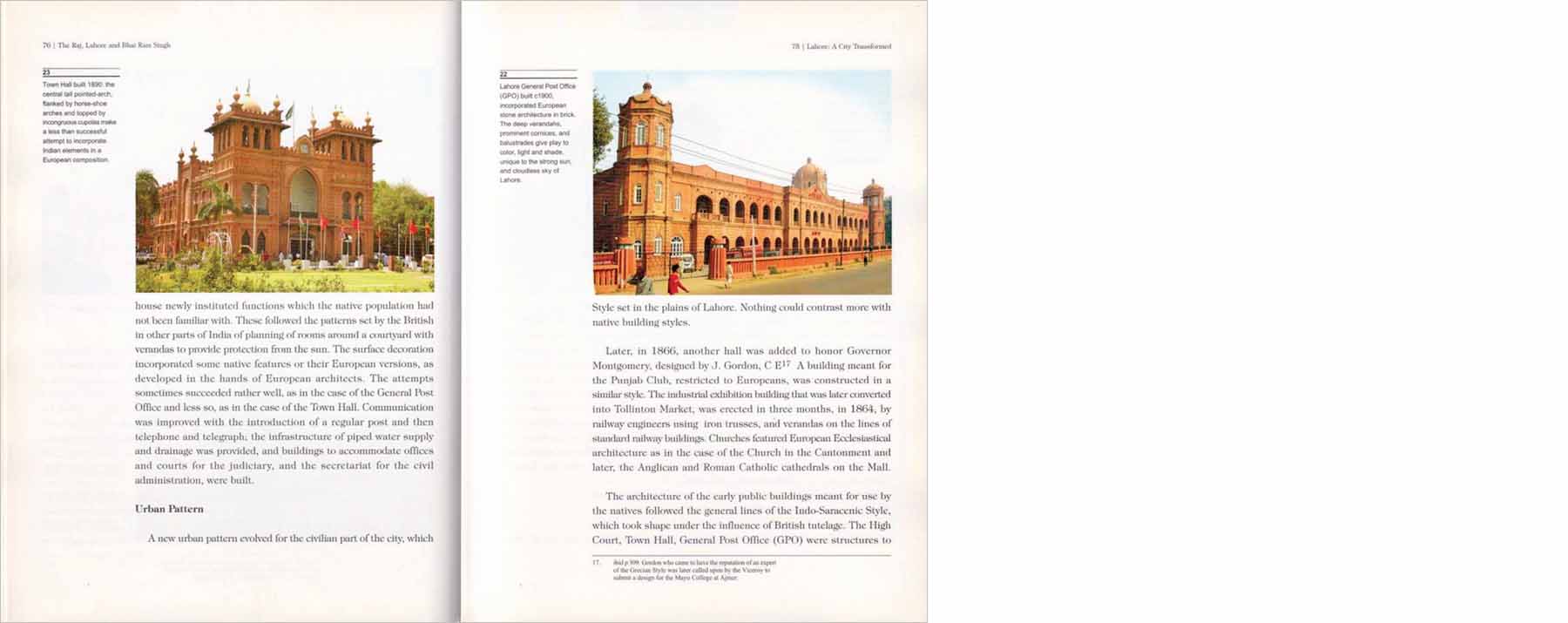| pakistan
CRAFTSMANSHIP IN ARCHITECTURE
BOOK REVIEW: THE RAJ, LAHORE & BHAI RAM SINGH
Review by Priyaleen Singh
LA 79 |
|
| The book lluminates Bhai Ram Singh’s pioneering architectural legacy in Lahore, navigating colonial constraints with a blend of native traditions and European influences, advocating for an architecture of assimilation and relevance today.
|
|
 |
|
The book is structured in four sections. The first section introduces the impact of the British on the built environment of the period, exploring ‘orientalism’ and the role of personalities like William Jones, James Prinsep, John Gilchrist, and Fergusson. The second section focuses on Lahore and its transformation and growth in the nineteenth century setting a context to locate the architecture of Bhai Ram Singh, whose buildings changed the face of Lahore, as its boundaries expanded beyond the walled city. The third section explores the state of technical and art education in Punjab. As the century of engineering, inevitably architecture became a sub-part of engineering in all institutions of design. While the majoritarian view denigrated the principles and form of existing Indian architecture, Swinton Jacob and J.L. Kipling stood out as the few, arguing forcefully for the rehabilitation of the native crafts and architecture. With remarkable clarity of vision, they attempted to resuscitate the neglected Indigenous profession of architects whom the government was dismissing as mere ‘mistries’. Bhai Ram Singh was a product of this thinking and The Mayo School of Industrial Arts set up in 1875 became his alma mater...
|
|
|

|
|
|
|
|